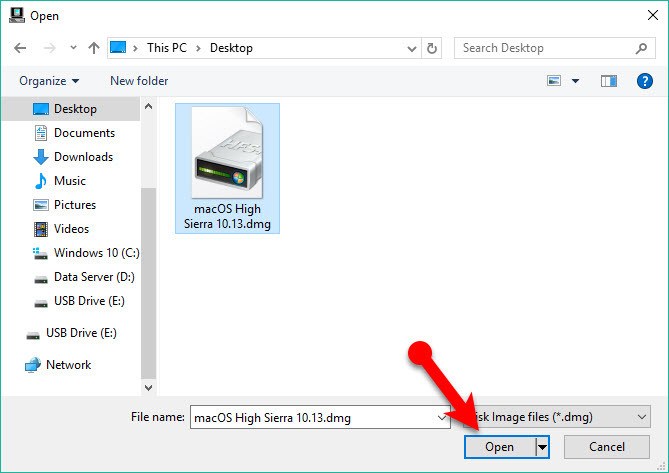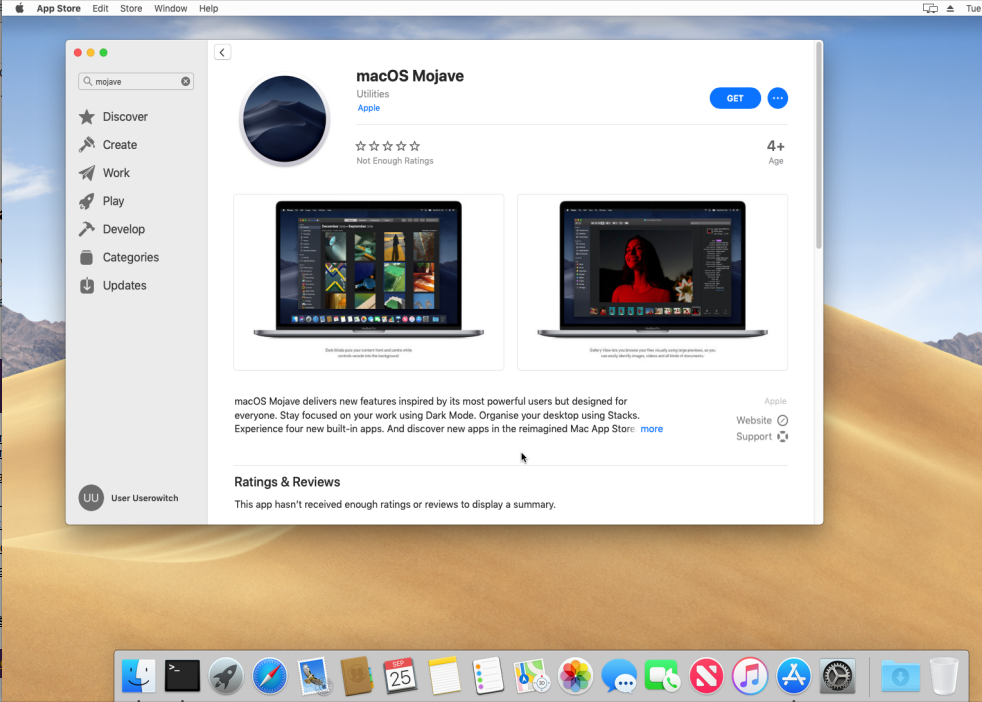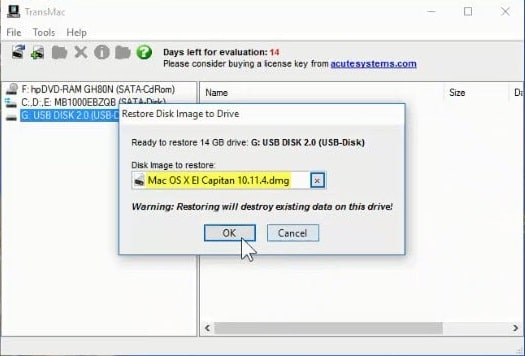In the following instruction, we show specifically how to make a Mac OS X bootable installation USB from El Capitan.DMG, Yosemite.DMG, Maverick.DMG or any OS X older versions on Windows PC. Plants vs zombies 1.0.40 dmg. Below are the steps needed to create an USB flash drive El Capitan bootable installer. Download the InstallMacOSX.dmg file by clicking on the OS X El Capitan 10.11 link in the Apple document 'How to get old versions of macOS'. These instructions assume this file has been downloaded to your /Downloads folder.

Bootable USB Installers for OS X Mavericks, Yosemite, El Capitan, and Sierra First, review this introductory article: Create a bootable installer for macOS. Second, see this How To outline for creating a bootable El Capitan installer. DMG file is a compressed file format being used widely on Mac computer. Create Bootable USB for Mac OS X El Capitan with TransMac. How To Create Bootable Usb For Os X El Capitan Download. A new pop up box will appear, click on the three-dots, and then select the macOS X El Capitan.DMG file from Windows. Then click on OK. Since the file is huge so it will take quite time to complete. Anydesk free download for.
After a few minutes, the system creates a bootable USB drive that has the El Capitan installer. Enter the following path to the terminal. Take the El Capitan iso or dmg installer. Jan 24, 2018 Download Mac OS X 10.11 El Capitan.ISO – Download El Capitan.DMG installer – El Capitan Torrent download – Without using Apple Store ID. Make a Bootable El Capitan USB Drive for Mac from Windows PC After a couple days of random Google searches, I finally was able to put together enough information to figure out how to make a bootable USB drive to restore my Mac using a PC. Installing or booting every operating system needs to create bootable USB whether OS X or any other. Of course, we’ve to make an installer drive for installing Mac OS X. It may sound simple or an easy task but make sure that it is much more complicated from installing OS X El Capitan on VMware, Mac or PC because Mac OS switches harder to use than Windows or Linu.
It's very easy to create a bootable ISO image of El Capitan, if you have aworking El Capitan system installed on your machine.
Start with going to AppStore and installing El Capitan, so you'll have anapplication named Install El Capitan in your Application list. Then, youshould follow the steps below.
There is an installation image file inside /Applications/Install El Capitan.app, named InstallESD.dmg. It's not a bootable ISO that can be usedto install the system on a virtual machine, but we'll get there. Mount thisimage to some directory by using the hdiutil tool:
The -noverify and -nobrowse options are there to make mounting operationfaster and to make sure that Finder will not automatically pop up.
Now let's create a placeholder image of our ISO file.
This can take a while.
After an empty ISO file will be created, we need to mount it:
Then, we will use asr tool to populate the contents of our new drive:
The asr tool will automatically create a new mountpoint, /Volumes/OS X Base System. We're going to put some files into this directory.
First of all, remove an invalid link that won't be needed here:
Instead of this link, we need a proper directory, full of package files. We'regoing to copy this directory from the ESD image that we have mounted few stepsearlier.
We're going to copy some additional installer dependencies as well.
After that, we can unmount stuff we don't need anymore:
Last step is to convert our ISO file into the UDTO format.

Done. The ElCapitan3.iso.cdr can be renamed to ElCapitan.iso, and can beused in virtualization software like VirtualBox 5.
/SelectDisk-56a5d51f3df78cf7728a0fc9.jpg)
The method described above was found on forums.MacRumors.com(permalink).Thanks to colt2!
Introduction
Apple officially released OS X 10.11 El Capitan operating system in September 2015 as an update through Apple App Store. This actualization will update core of your system and preserve your user data.
However, if you want to have a clean installation of El Capitan on your Mac you will need to create a special installation USB drive and in this article we will show you how.
Four ways how to create El Capitan USB installation flash drive:

Preparation - get OS X El Capitan installer and USB flash drive
Download El Capitan installer (Install OS X El Capitan.app in Applications folder) available in Mac App Store.
Prepare a flash drive with OS X Disk Utility. Format it with GUID Partition Table and name it as Untitled. The minimal capacity of flash drive must be 8 GB.
How to create El Capitan installation USB drive with createinstallmedia tool
The createinstallmedia is a command line tool distributed with OS X installer.
When you have prepared your USB flash drive and El Capitan installer is downloaded from App Store ► open Terminal and type command:
sudo /Applications/Install OS X El Capitan.app/Contents/Resources/createinstallmedia --volume /Volumes/Untitled --applicationpath /Applications/Install OS X El Capitan.app --nointeraction
In our case 'Untitled' is the name of USB flash drive! Replace 'Untilled' by name of your flash drive.
Wait a few minutes and your El Capitan installation USB drive will be prepared.
To install OS X El Capitan ► restart computer ► hold the Option key and select Installation USB drive from the menu.
How to create El Capitan USB installation with Terminal commands
When your USB flash drive is ready and El Capitan installer downloaded from App Store ► Open Terminal and type the following sequence of commands:
sudo hdiutil attach /Applications/Install OS X El Capitan.app/Contents/SharedSupport/InstallESD.dmg
sudo asr restore -source /Volumes/OS X Install ESD/BaseSystem.dmg -target /Volumes/Untitled -erase -format HFS+
sudo rm /Volumes/OS X Base System/System/Installation/Packages
sudo cp -a /Volumes/OS X Install ESD/Packages /Volumes/OS X Base System/System/Installation/Packages
Create Bootable El Capitan Usb From Dmg
sudo cp -a /Volumes/OS X Install ESD/BaseSystem.chunklist /Volumes/OS X Base System
sudo cp -a /Volumes/OS X Install ESD/BaseSystem.chunklist /Volumes/OS X Base System
sudo cp -a /Volumes/OS X Install ESD/BaseSystem.dmg /Volumes/OS X Base System
hdiutil detach /Volumes/OS X Install ESD
Now wait until your bootable installation flash drive with OS X 10.11 El Capitan is made.
To install OS X El Capitan ► restart computer ► hold the Option key and select Installation USB drive from the menu.
How to create El Capitan USB installation with Disk Utility and Finder
When your USB flash drive is ready and El Capitan installer downloaded from App Store ► Open Terminal and type:

defaults write com.apple.finder AppleShowAllFiles 1 && killall Finder
This command allows you to view hidden files in Finder.
Now Open Finder ► Applications ► Install OS X El Capitan.app ► right click ► Select Show Package Contents option.
Navigate to Contents/SharedSupport ► Mount InstallESD.dmg file
Create Bootable Usb From Dmg El Capitan Mac
Open OS X Install ESD archive in Finder and mount BaseSystem.dmg archive
Connect USB drive and open Disk Utility (/Applications/Utilities)
Select the USB drive from the list of disks, select Restore tab and pick Select OS X Base System archive as a source and USB flash drive as the destination. When ready click on Restore button.
After the Restore process is finished, open Finder ► open USB drive (OS X Base System) ► go to the System/Installation folder and select Packages file and delete it.
Open OS X Install ESD volume in Finder, select Packages folder and copy them to System/Installation folderRosetta stone german serial key. on USB drive.
Also copy BaseSystem.chunklist and BaseSystem.dmg files from InstallESD.dmg volume to root of USB flash drive (OS X Base System).
Now your El Capitan installation USB drive is prepared and ready for use.
To install OS X El Capitan ► restart computer ► hold the Option key and select Installation USB drive from the menu.
How to create El Capitan USB installation disk with DiskMaker X
DiskMaker X tool is Wizard like tool that allows you create OS X installation disk. Download DiskMaker X to your Mac and copy it to Applications folder.
Create Bootable Usb From Dmg El Capitan Download
When you have prepared your USB flash drive and El Capitan installer is downloaded from App Store ► open DiskMaker X.
Select version of OS X (in our case El Capitan)
Select copy of OS X installation app
Select USB drive that will be used for USB installation
And wait a few minutes till the the DiskMaker X finish creating process.
Os X El Capitan Create Bootable Usb From Dmg
To install OS X El Capitan ► restart computer ► hold the Option key and select Installation USB drive from the menu.
These advanced steps are primarily for system administrators and others who are familiar with the command line. You don't need a bootable installer to upgrade macOS or reinstall macOS, but it can be useful when you want to install on multiple computers without downloading the installer each time.
What you need to create a bootable installer
- A USB flash drive or other secondary volume formatted as Mac OS Extended, with at least 14GB of available storage
- A downloaded installer for macOS Big Sur, Catalina, Mojave, High Sierra, or El Capitan
Download macOS
Mac Restore Dmg To Usb
- Download: macOS Big Sur, macOS Catalina, macOS Mojave, or macOS High Sierra
These download to your Applications folder as an app named Install macOS [version name]. If the installer opens after downloading, quit it without continuing installation. To get the correct installer, download from a Mac that is using macOS Sierra 10.12.5 or later, or El Capitan 10.11.6. Enterprise administrators, please download from Apple, not a locally hosted software-update server. - Download: OS X El Capitan
This downloads as a disk image named InstallMacOSX.dmg. On a Mac that is compatible with El Capitan, open the disk image and run the installer within, named InstallMacOSX.pkg. It installs an app named Install OS X El Capitan into your Applications folder. You will create the bootable installer from this app, not from the disk image or .pkg installer.
Use the 'createinstallmedia' command in Terminal
- Connect the USB flash drive or other volume that you're using for the bootable installer.
- Open Terminal, which is in the Utilities folder of your Applications folder.
- Type or paste one of the following commands in Terminal. These assume that the installer is in your Applications folder, and MyVolume is the name of the USB flash drive or other volume you're using. If it has a different name, replace
MyVolumein these commands with the name of your volume.
Big Sur:*
Catalina:*
El Capitan Dmg To Bootable Usb
Mojave:*
High Sierra:*
El Capitan:
* If your Mac is using macOS Sierra or earlier, include the --applicationpath argument and installer path, similar to the way this is done in the command for El Capitan.
After typing the command:
- Press Return to enter the command.
- When prompted, type your administrator password and press Return again. Terminal doesn't show any characters as you type your password.
- When prompted, type
Yto confirm that you want to erase the volume, then press Return. Terminal shows the progress as the volume is erased. - After the volume is erased, you may see an alert that Terminal would like to access files on a removable volume. Click OK to allow the copy to proceed.
- When Terminal says that it's done, the volume will have the same name as the installer you downloaded, such as Install macOS Big Sur. You can now quit Terminal and eject the volume.
El Capitan Dmg To Bootable Usb Driver
Use the bootable installer
Determine whether you're using a Mac with Apple silicon, then follow the appropriate steps:
El Capitan Dmg Boot Usb
Apple silicon
- Plug the bootable installer into a Mac that is connected to the internet and compatible with the version of macOS you're installing.
- Turn on your Mac and continue to hold the power button until you see the startup options window, which shows your bootable volumes.
- Select the volume containing the bootable installer, then click Continue.
- When the macOS installer opens, follow the onscreen instructions.
Intel processor
- Plug the bootable installer into a Mac that is connected to the internet and compatible with the version of macOS you're installing.
- Press and hold the Option (Alt) ⌥ key immediately after turning on or restarting your Mac.
- Release the Option key when you see a dark screen showing your bootable volumes.
- Select the volume containing the bootable installer. Then click the up arrow or press Return.
If you can't start up from the bootable installer, make sure that the External Boot setting in Startup Security Utility is set to allow booting from external media. - Choose your language, if prompted.
- Select Install macOS (or Install OS X) from the Utilities window, then click Continue and follow the onscreen instructions.
Learn more
A bootable installer doesn't download macOS from the internet, but it does require an internet connection to get firmware and other information specific to the Mac model.
For information about the createinstallmedia command and the arguments you can use with it, make sure that the macOS installer is in your Applications folder, then enter the appropriate path in Terminal: